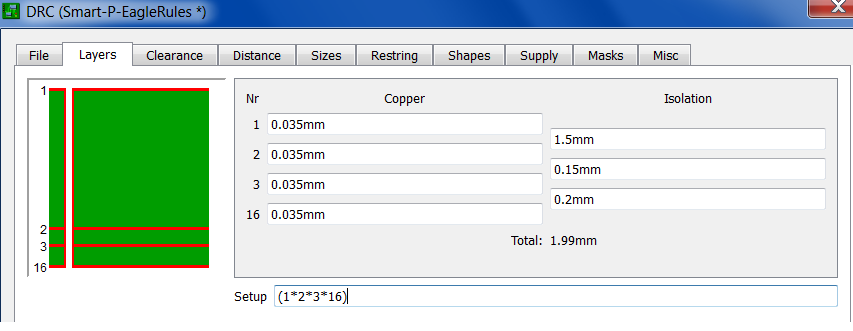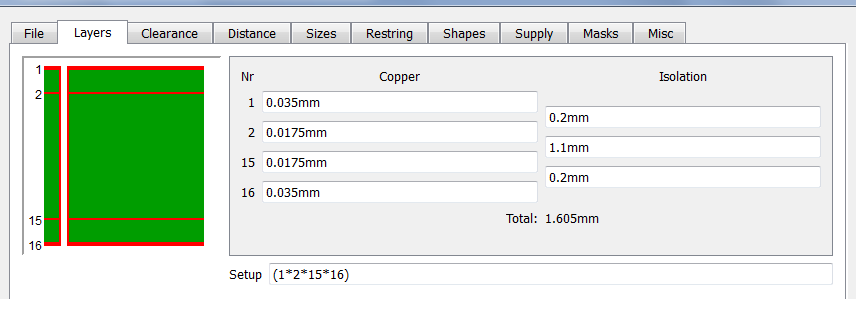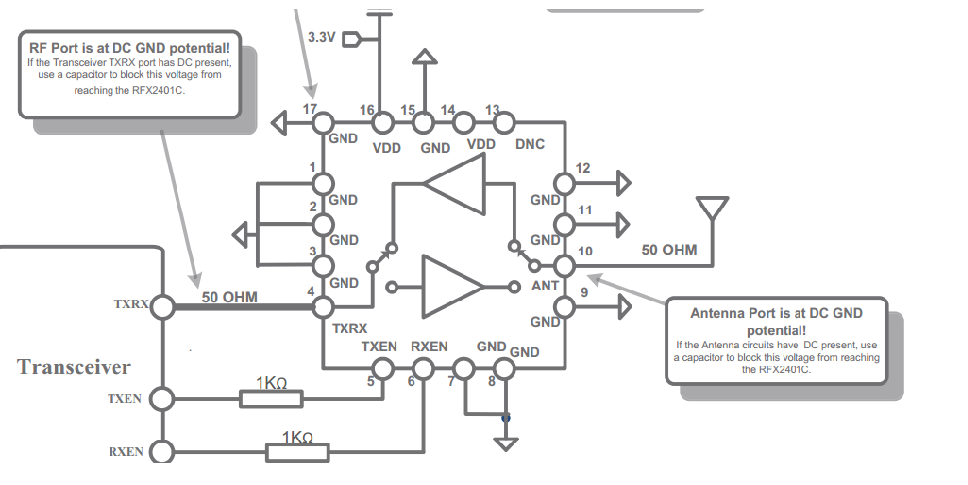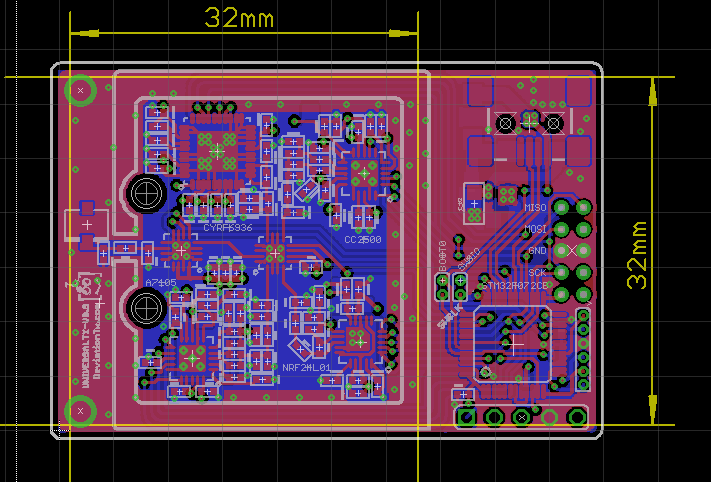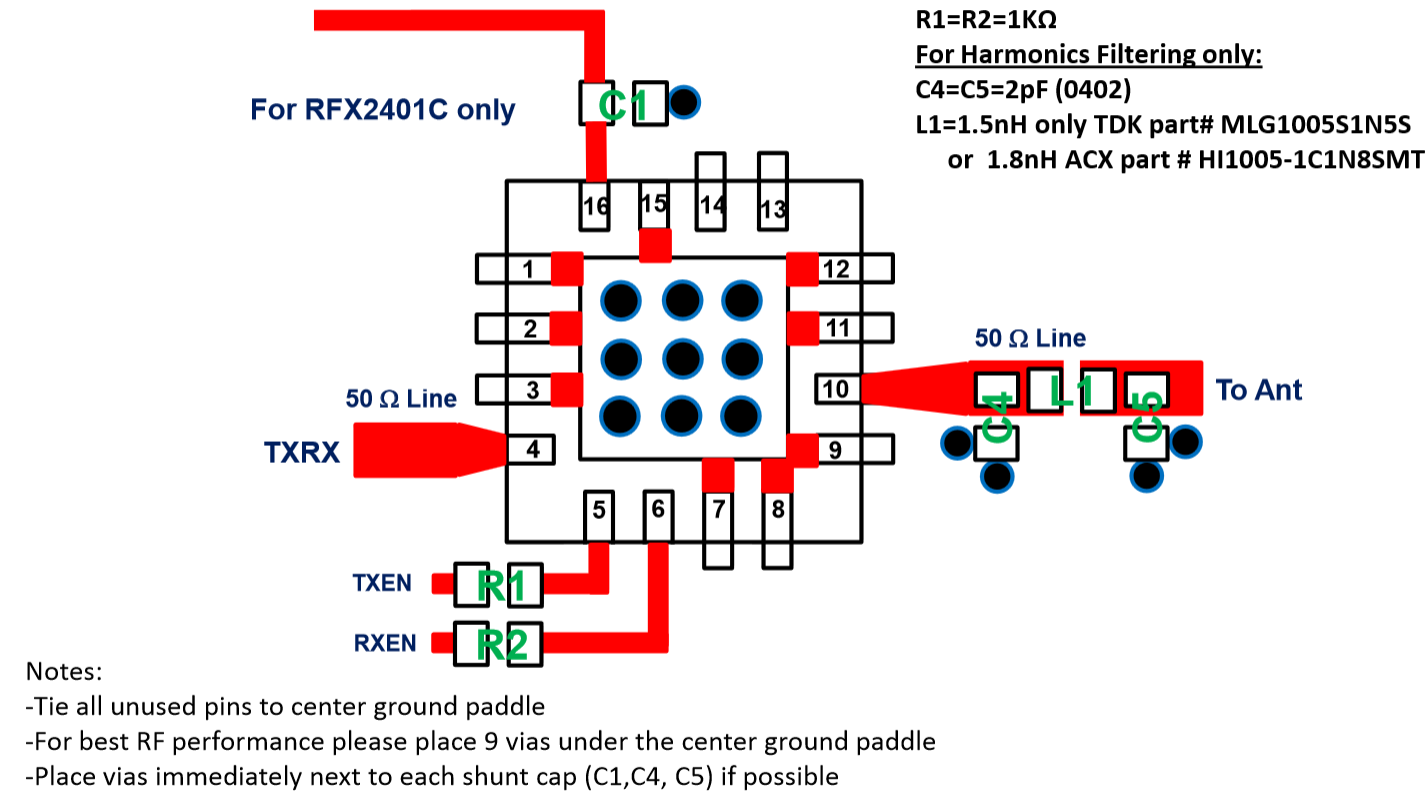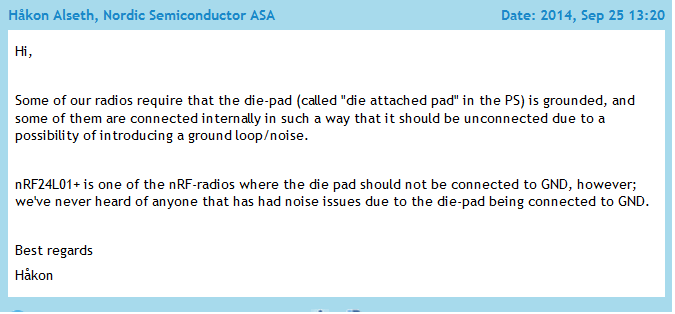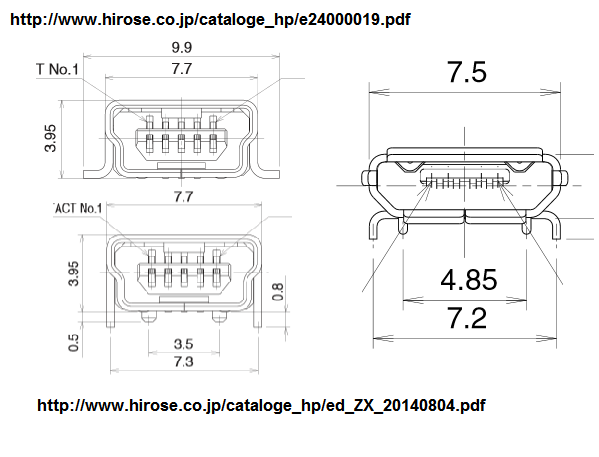- Posts: 4403
Single-Board Universal Module
- PhracturedBlue
-
Topic Author
- Offline
Somewhat related, I have never in my life been able to properly use solder wick. I've seen people use it just fine, but I can't remove solder with it either on through-hole parts or to fix bridges. I made a mess of the mcu trying to fix the bridges with it (lifted a pad, made things worse). While I eventually got the bridges fixed using my hot-air gun, in the end I just removed the mcu and cleaned up the pads, but the short is still there.
Please Log in or Create an account to join the conversation.
- PhracturedBlue
-
Topic Author
- Offline
- Posts: 4403
Please Log in or Create an account to join the conversation.
- mikemacwillie
-
- Offline
- Posts: 152
I see lots of people remove too much solder from surface mount pads with solder wick while cleaning up bridges. It's also really easy to overheat and lift pads while using it. There are some hollow shaped chisel tips for the Hakko iron I have that are great for removing excess solder and cleaning up bridges. They have a little bowl in the flats of the chisel, which holds on to the solder. I'm not sure what iron you have, but it might be worth looking for something similar for your iron.
Please Log in or Create an account to join the conversation.
- PhracturedBlue
-
Topic Author
- Offline
- Posts: 4403
I have all relevant layers turned on, and the only DRC violations I see are on the stop-mask layer. We actually designed to more conservative rules than OSHPark requires so that the board can be made at Chinese PCB shops.,
Did you grab the latest board from:
bitbucket.org/SadSack/universaltx-4-layer
The logo should reference 'UniveralTx-0.9'
Please Log in or Create an account to join the conversation.
- mikemacwillie
-
- Offline
- Posts: 152
Please Log in or Create an account to join the conversation.
- mikemacwillie
-
- Offline
- Posts: 152
Please Log in or Create an account to join the conversation.
- victzh
-
- Offline
- Posts: 1386
Please Log in or Create an account to join the conversation.
- PhracturedBlue
-
Topic Author
- Offline
- Posts: 4403
www.amscope.com/microscopes/3-5x-180x-st...th-80-led-light.html
I've been using it for a couple years and prefer it over the other options I've tried
a) I can hook it up to a monitor
b) Using the 0.5X Barlow, it has a 8" working distance
c) It has a great field of view
c) The LED ring gives excellent illumination
I have only compared it to cheap binocular glasses and a jeweler's loupe (and of course a stationary magnifying glass). I get less eye-strain and much better control and working distance with the scope than I had with any of the above.
I'm actually about to upgrade the head to a trinocular scope. Dropping a camera into the eyepiece when I want a monitor is annoying. I'm just trying to decide if I should upgrade to the ZM head or not.
One thing about cameras. Most cheap ones have a tiny sensors which narrows the field of view (giving unwanted extra magnification). I prefer either a DSLR or a large-sensor astronomy camera to get a full frame image.
Please Log in or Create an account to join the conversation.
- mikemacwillie
-
- Offline
- Posts: 152
Please Log in or Create an account to join the conversation.
- moss
-
- Offline
- Posts: 40
I just did a pull from bitbucket.org/SadSack/universaltx-4-layer/downloads and looked at the schematic. (june 3, 2014)
EDIT: I just pulled V0.9 which has 4 layers. This is not the typical stack-up which has ~9mil dielectric on outer layers.
9 mil dielectric is doable for FR4 keeping 50 ohm lines at sane widths.
(strip-line should be 14 mil wide on 8 mil FR4 ~ e=4.4)
The 1.5 mm dielectric would make those 9 mil lines 133 Ohm.
This would be a typical mass production type board, 1oz. outer, 1/2oz. inner copper and ~ 8 mil dielectric.
Just quickly breezing tru schematic for possible trouble, and I saw one that bit me once;
The SKY13384-350LF U6 pin 15 input as well as the RFX2401C U5 pin4 are both have DC, and there is no DC-blocking cap on this line. Odds are the DC-levels are not the same. The other ports on the 4-way switch have DC-blocking via the matching caps, which should suffice. The RFX2401C has DC on antenna, and to reduce chances for mishaps a cap here would not hurt.
The SMT USB connectors are not as robust as the thru hole type, H2960TR-ND. The strength of copper adhesion to the FR4 is not that impressive.
Did you consider a SAW filter on the PA input? You get a 2dB loss, but your harmonics will be way down, the filter takes out ~ 40dB out band stuff.
The 3x3 mm filters are easy to use, the smaller ones are a bit hairy.
The pi-filter (band-pass) on the antenna is not very effective, and has a 2dB loss with ideal components. A simple low value cap (3pF NPO ~0.08dB S21 at 2.4GHz) ) may be enough to cut out lower frequency stuff, and block DC.
Bypass caps on the PA chip could be closer, the lowest value cap here at least. Why not pour ground around the whole top? More ground vias is better, too many is not possible!
Cream layer shows no paste under PA.
The nRF24L01 has a metal slug, I think this needs to be soldered in too, but the mfg. should perhaps be asked.
It is hard to inspect solder under the chips (w/o x-ray) but more solder would not hurt, the excess will be sucked out in the vias.
Please Log in or Create an account to join the conversation.
- PhracturedBlue
-
Topic Author
- Offline
- Posts: 4403
We didn't necessarily adjust the stack-up, since it doesn't affect the gerber files. The stackup is whatever the manufacturer uses (in the case of oshpark 6.7/47/6.7 but the board tolerances should allow it to be produced on many manufacturers process) The line widths should be pretty close to 50 ohm if I calculated it properly.
It is a good point on the dc blocking caps, but I wouldn't have a clue how to go about sizing them.
I am aware of the missing solder mask below the mux and PA chips. I only found that after getting the stencils back, but it'll be fixed in the next iteration.
We were running out of room on the board, and I'm not sure a through-hole usb port will hold. I am well aware the SMT ones are less robust, but the USB port won't get a lot of use in normal operation. It is worth looking at again though.
The pi filter on the antenna came directly from the rfaxis docs (or maybe app note) as a means to help with FCC compliance (should I ever get that far). I'm not confident enough in what I'm doing to try to design it myself. The same goes for a SAW filter.
The nrf manual specifically recommends not to solder the pads, so I didn't.
If you are interested to help, I'd be glad for it. As I said above, I'm basically flying blind. Sadly we don't yet have a functional board to even verify functionality much less measure RF performance.
Please Log in or Create an account to join the conversation.
- moss
-
- Offline
- Posts: 40
The thru hole USB may take less room than the one you now have. Micro USB is becoming more common, phones and stuff, and may save you some space. It can be hand soldered on the "other" side too.
I did not catch the shield mfg. but Digi-Key has those good'n cheap Laird parts with removable lid. the 32x32mm 903-1053-1-ND could work if you moved the RF connector to the "other" side, the 1x1" may be too tight.
I found the harmonics filter in the app note www.bocon.com.cn/artupfile/2013-12-24/02013122401460816545.pdf
www.mouser.com/ds/2/400/DEA162450BT-1288B1-269740.pdf probably better than the discretes, ~ 1 dB loss.
Any plans to include FASST?
Nordic Semi answered that grounding of the center pad is not necessary, nor possibly harmful:-)
Please Log in or Create an account to join the conversation.
- PhracturedBlue
-
Topic Author
- Offline
- Posts: 4403
That is good to hear from the nordic folks. It would allow using a Belkin transciever as a replacement as it is drop in compatible pin wise (there would still be a change in BOM, as the balance network would need to be tweaked)
Becasue of the mounting restrictions on the Walkera radios, I don't think I can place the antenna on the bottom of the board. I was also tryingto avoid any vias on the RF signal.
I never got far enough to plan for a shield box. But it is definitely worth looking into if there are off-the-shelf boxes that can be made to fit.
Please Log in or Create an account to join the conversation.
- moss
-
- Offline
- Posts: 40
I don't have a SPI bus analyzer so can't give you any dumps, but I'm interested to see how the "bind" works. Is it usually, or always, a two way hand shake? I would think the TX GUID is visible in the receiver SPI data stream? In one case the frequency hopping table was an algorithm based on this, but I guess it also could be a programmed look-up table or a dump from the transmitter?
I'm thinking of getting a Salae SPI bus analyzer, but they are not currently shipping,(new models underway) is that the one to get?
The PCB could use some more vias, the output connector grounds will be more robust with vias, The PA chip in the app note has more vias (9), likely for thermal reasons. Cram in as many as you can.
A shield can around the TX may not be necessary, it is often included as an option in case you get into trouble.
Please Log in or Create an account to join the conversation.
- PhracturedBlue
-
Topic Author
- Offline
- Posts: 4403
I don't have experience with the ML2730. Futaba has a bunch of different protocols, using a couple different chips. I was thinking of the CYRF6936 variant. One of the problems with the ML2730 as I recall is obtaining them can be challenging.
I have one board left to try to assemble. After that we'll need to make another run.
I've made some of the changes you recommended: Moved PA vias, added DC blocking, added a few more vias, added a paste layer under the mux and PA. I added another via under the PA, but to go more than 5 will violate the DRCs I'm using on drill spacing. I did not try to add a SAW filter, or adjust the Harmonics filter. I didn't switch to a through-hole USB either, as I can't find a micro-usb through-hole, and I already have a bunch of the ones currently speced in stock. As far as a top-pour goes, I've tried before, and I'm not happy with how it turns out. Maybe I'm just not very good at controlling Eagle, I don't know.
Please Log in or Create an account to join the conversation.
- vlad_vy
-
- Offline
- Posts: 3333
www.deviationtx.com/forum/3-feedback-que...utaba-s-binding#2289
Please Log in or Create an account to join the conversation.
- moss
-
- Offline
- Posts: 40
Approximate board areas, 47 mm^2 micro TH, 71 mm^2 mini TH, and 89 mm^2 for mini SMT.
www.digikey.com/product-detail/en/ZX62D-.../H11610CT-ND/1963859
Please Log in or Create an account to join the conversation.
- mikemacwillie
-
- Offline
- Posts: 152
Please Log in or Create an account to join the conversation.
- mikemacwillie
-
- Offline
- Posts: 152
I got the top side mostly populated this evening. I ran in to one issue... I have no idea where I put the damn PAs when they arrived. They weren't in my bin with the rest of the parts. I went ahead and populated the top side anyways.. I'll use my hot air gun to place the PA when (if) I find them. I've ordered more just in case I accidentally threw them out with the pile of packaging.
Here's one fresh off the hot plate. I prefer the hot plate to the oven for this kind of thing; The only trade-off is you can't reflow a double sided board with it. I had planned on doing the back side by hand anyways. They turned out fairly well, only a few spots will need touchup. There are a couple of solder joints that are a bit dry due to having vias in the pads, which wicks away the solder. Easy enough to touch up.
Overall, they go together quite easily. It's nice to see that you didn't use the built-in 0402 footprint from Eagle, which has pads that are a little bit too big and far apart for good reflow. I'll look at cutting the trace and adding the DC blocking cap when I do the touch up.
Please Log in or Create an account to join the conversation.
- PhracturedBlue
-
Topic Author
- Offline
- Posts: 4403
Even without the PA, you can power up the boards (once you've got the reverse side built). The test code will verify that the RF chips are talking on the SPI bus properly.
I have a test dfu file here:
dl.dropboxusercontent.com/u/52854517/universaltx_DOA.dfu
The code is in the main deviation depo (under the universaltx dir)
I never actually finished the code to interface it with the radio, so at the moment it can't do much more than write out status on the stdout pin. I currently have PPM (JP2 pin 1) configured for stdout.
The stm32f072 has a built-in USB bootloader. To enable it, you should place a jumper across BOOT0. This jumper places the stm32 into bootloader mode when power is applied by USB (but not by normal 5V supply). If you plan to use a 5V supply to the 10-pin header, you can leave the jumper in place. The jumper is there so that the board can optionally be used as a USB controlled radio (maximizing its utility)
Just install the STM DFuSe tool:
www.st.com/web/en/catalog/tools/FM147/CL...C961/SS1533/PF257916
Then start the software, and plug in the board via USB (without 5V power attached). DFuSE should detect the board if everything goes smoothly. Then just 'Upgrade' the dfu file (make sure not to do an 'Upload' since that is actually a download and exactly the opposite of what you want)
JP2.1 is the debug output. Hook it up via a USB2UART at 115200,N,8,1
If everything goes really well, it will output:
Power Up
NRF24L01: Found
A7105: Found
CC2500: Found
CYRF6936: Found
DonePlease Log in or Create an account to join the conversation.
-
Home

-
Forum

-
Development

-
Development

- Single-Board Universal Module

